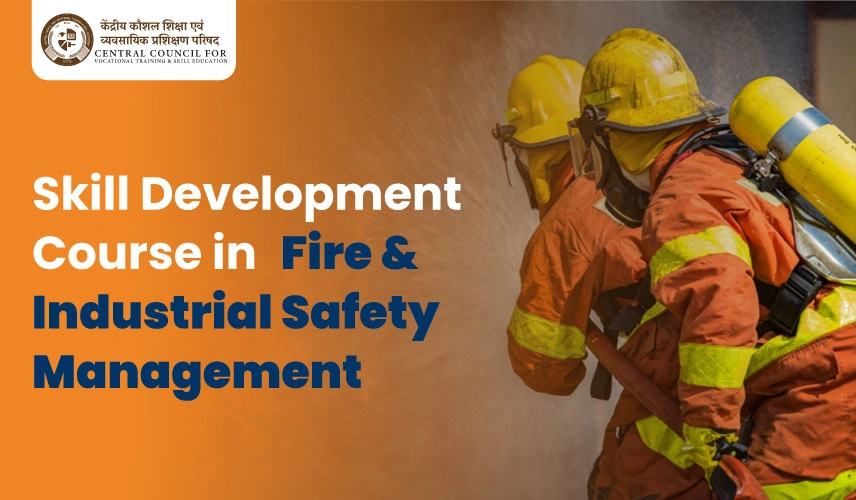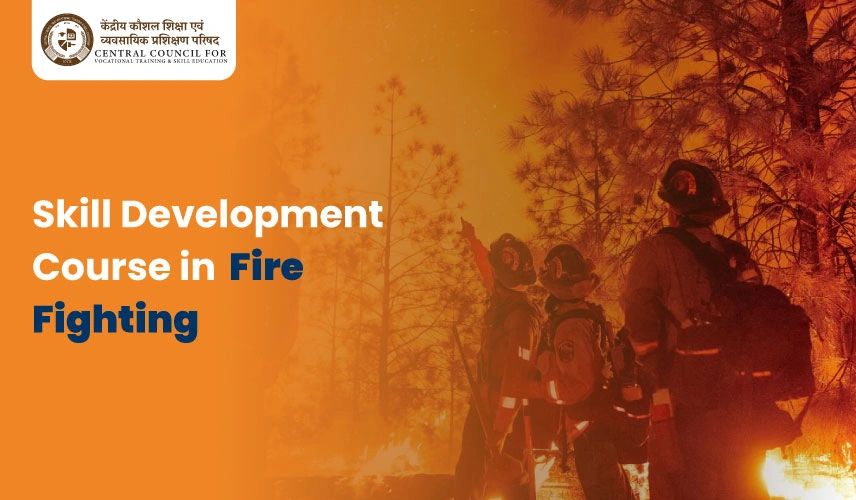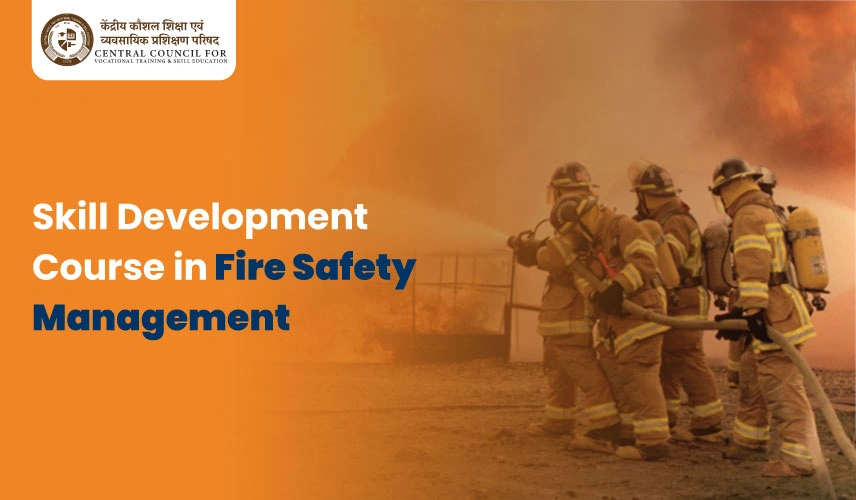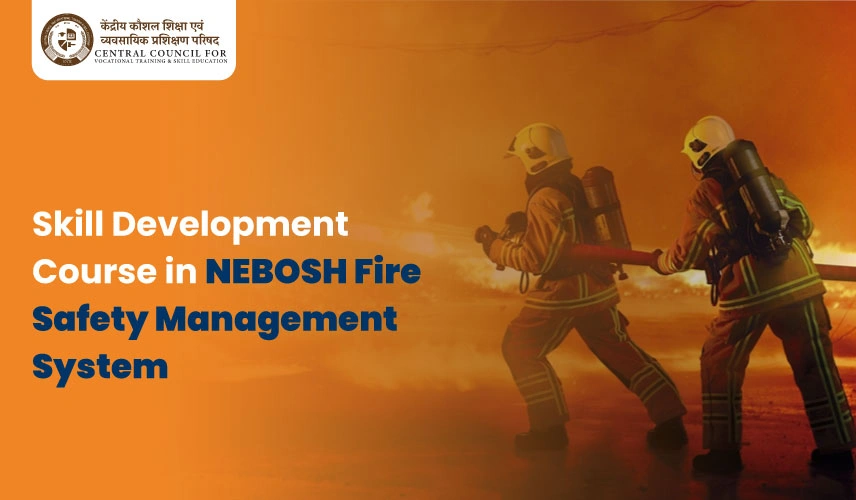- +91 8595350621
- info@ccvte.org
- C4/97B, Keshav Puram, Delhi-110035
Fire Fighting and Safety Management
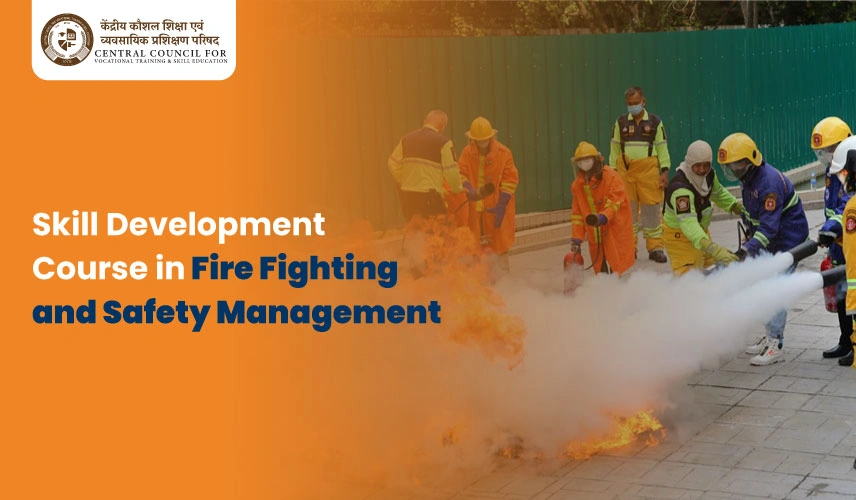
Skill Development Program in Fire Fighting and Safety Management
Fire Fighting and Safety Management encompasses the practices and principles essential for preventing, controlling, and responding to fire emergencies, ensuring the safety of people, property, and the environment. This field integrates fire prevention strategies, such as risk assessment and adherence to safety regulations, with fire suppression techniques, including the use of firefighting equipment and strategies for combating various types of fires. It also involves safety management aspects, such as emergency planning, safety training, and the implementation of incident command systems. Additionally, professionals in this field may engage in fire investigation to determine the causes of fires and work with fire protection systems like alarms and sprinklers. Careers in this area include roles such as firefighter, fire safety officer, fire inspector, fire investigator, safety manager, and emergency response coordinator, all of which play crucial roles in safeguarding lives and property.
Why did you choose the Fire Fighting and Safety Management Course from CCVTE?
Choosing a Fire Fighting and Safety Management course from a CCVTE offers several advantages:
- Industry-Relevant Curriculum: We provide up-to-date and practical knowledge that aligns with current industry standards and demands.
- Expert Instructors: Our courses are typically taught by experienced professionals and researchers who are leaders in the field, ensuring high-quality instruction.
- Hands-On Experience: Our courses offer hands-on projects and real-world case studies, allowing you to apply theoretical knowledge and build a robust portfolio.
- Networking Opportunities: Enrolling in Our courses we can provide networking opportunities with peers, instructors, and industry professionals, which can be valuable for career growth.
- Certification: Upon completion, you often receive a recognized certification or diploma that can enhance your resume and improve job prospects.
- Access to Resources: Our courses usually provide access to a wealth of learning materials, tools, and platforms that can facilitate deeper understanding and practical skills development.
- Career Support: We provide career support services such as job placement assistance, resume reviews, and interview preparation, helping you transition into the workforce more smoothly.
Specialization in Fire Fighting and Safety Management
- Fire Prevention Techniques
- Fire Protection Systems
- Emergency Response Planning
- Risk Assessment and Management
- Legal and Regulatory Requirements
- Safety Management Systems
- Training and Education
- Advanced Fire Behavior
- Industrial Fire Safety
- Leadership and Crisis Management
Career opportunities
- Firefighter
- Fire Inspector/Investigator
- Safety Officer/Manager
- Emergency Management Specialist
- Health and Safety Consultant
- Industrial Hygienist
- Risk Manager
- Environmental Health and Safety (EHS) Specialist
- Training and Development Specialist
- Facilities Manager
- Fire Protection Engineer
- Government Regulatory Inspector
- Corporate Safety Director
- Forensic Fire Scientist
Syllabus for Fire Fighting and Safety Management
|
3 months |
6 months |
1 year |
2 years |
|
Introduction to Fire Fighting and Safety Management |
Introduction to Fire Fighting and Safety Management |
Introduction to Fire Fighting and Safety Management |
Introduction to Fire Fighting and Safety Management |
|
Fire Chemistry and Fire Behavior |
Fire Chemistry and Fire Behavior |
Fire Chemistry and Fire Behavior |
Fire Chemistry and Fire Behavior |
|
Fire Prevention Techniques |
Fire Prevention Techniques |
Fire Prevention Techniques |
Fire Prevention Techniques |
|
Fire Detection Systems |
Fire Detection Systems |
Fire Detection Systems |
Fire Detection Systems |
|
Fire Suppression Systems |
Fire Suppression Systems |
Fire Suppression Systems |
|
|
Emergency Response Planning |
Emergency Response Planning |
Emergency Response Planning |
|
|
Risk Assessment and Management |
Risk Assessment and Management |
Risk Assessment and Management |
|
|
Legal and Regulatory Requirements |
Legal and Regulatory Requirements |
Legal and Regulatory Requirements |
|
|
Safety Management Systems |
Safety Management Systems |
||
|
Training and Education in Fire Safety |
Training and Education in Fire Safety |
||
|
Advanced Fire Behavior |
Advanced Fire Behavior |
||
|
Industrial Fire Safety |
Industrial Fire Safety |
||
|
Hazardous Materials Handling |
|||
|
Leadership in Fire Safety |
|||
|
Crisis Management |
|||
|
Capstone Project and Practical Application |
Top Hiring Companies:
- FDNY (New York City Fire Department)
- LAFD (Los Angeles Fire Department)
- ExxonMobil
- Shell
- BP
- KBR
- Jacobs Engineering Group
- AECOM
- OSHA (Occupational Safety and Health Administration)
- EPA (Environmental Protection Agency)
- Chevron
- ConocoPhillips
- Honeywell
- Siemens
- Johnson Controls
- Adani Group
- Mahindra Group
- Godrej Group
Other Fire & Safety Courses Provided by CCVTE
Frequently Asked Questions
Yes, the course includes practical training sessions, which may involve simulations, real-life exercises, and use of firefighting equipment.
Prerequisites for enrolling in a Fire Fighting and Safety Management course typically include a high school diploma or equivalent. Physical fitness is crucial, as the role involves demanding physical activities. A medical clearance may be required to ensure the ability to perform strenuous tasks. Basic knowledge of fire safety and emergency response can be beneficial.
It Depends on your Course Duration if you complete a 3 and 6 months course , so you will get a certificate . and if you complete a 1 and 2 years course so you will get a diploma and advanced diploma.
- Knowledge of fire prevention and suppression techniques
- Ability to develop and implement safety plans
- Skills in emergency response and crisis management
- Understanding of safety regulations and compliance
- Practical experience in firefighting and safety operations
Firefighter , Fire Inspector/Investigator , Safety Officer/Manager , Emergency Management Specialist , Health and Safety Consultant ,Industrial Hygienist , Risk Manager , Environmental Health and Safety (EHS) Specialist , Training and Development Specialist.

